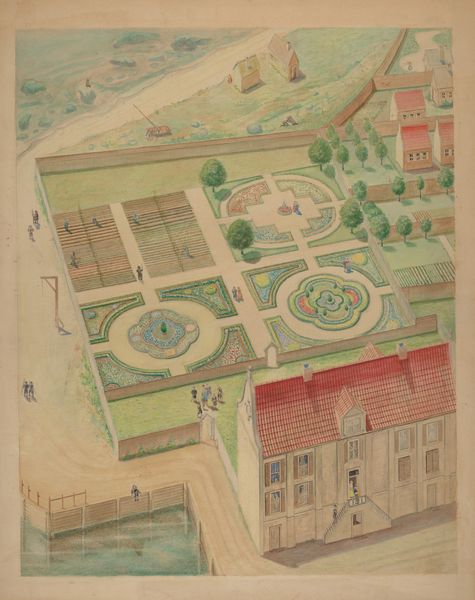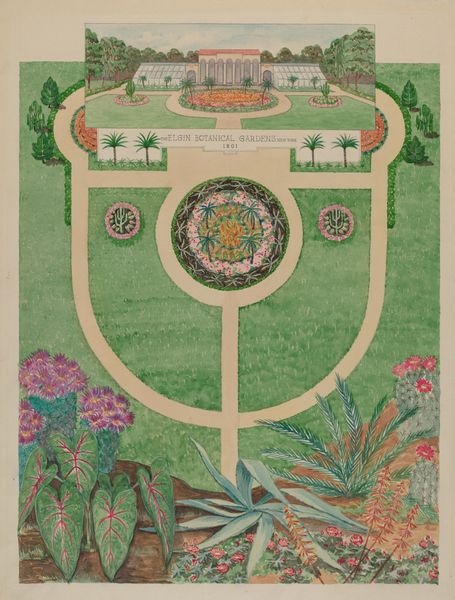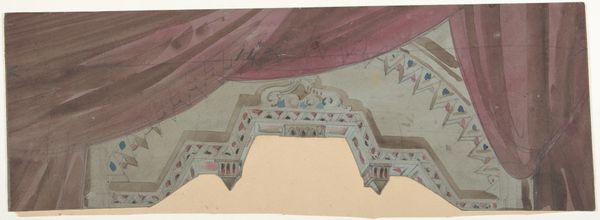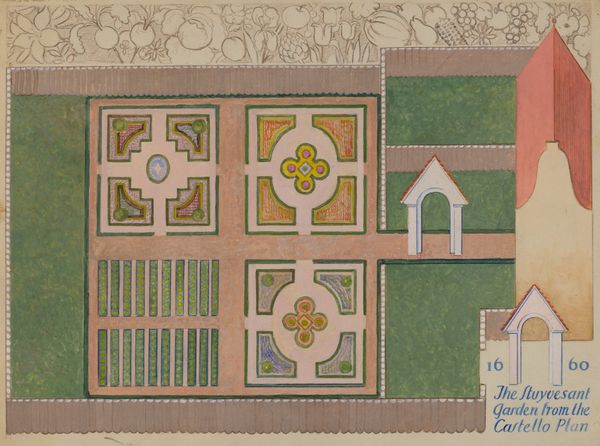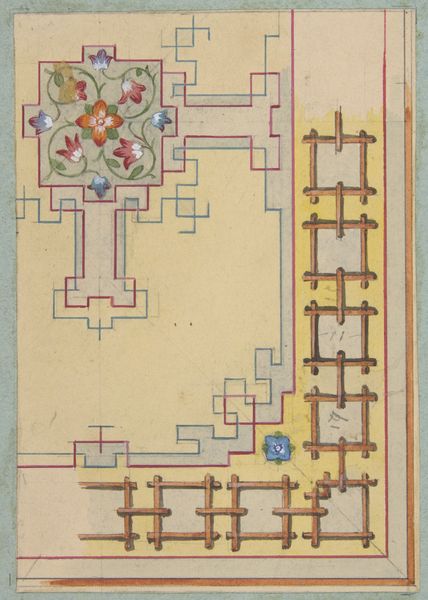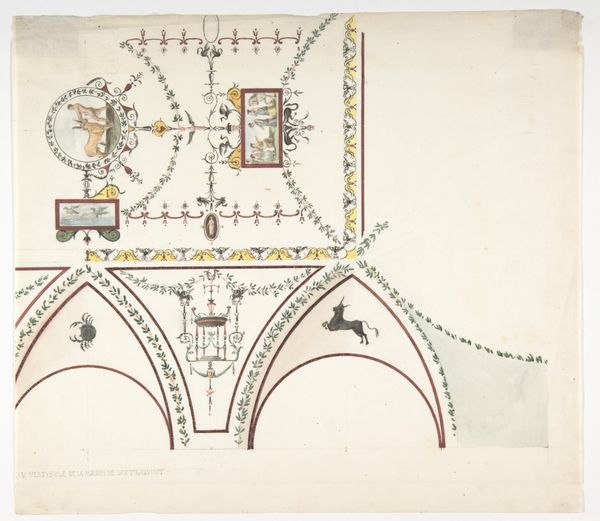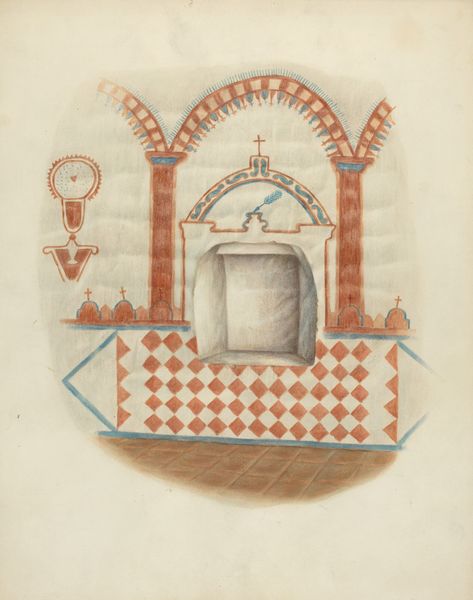
drawing, watercolor
#
drawing
#
water colours
#
landscape
#
watercolor
#
coloured pencil
#
history-painting
#
watercolor
Dimensions: overall: 22.9 x 29.9 cm (9 x 11 3/4 in.)
Copyright: National Gallery of Art: CC0 1.0
Editor: This watercolor and colored pencil drawing is titled "Stuyvesant's Great House," created around 1936 by George Stonehill. It feels so meticulously planned and somewhat artificial, given the bird's-eye view and the stylized landscaping. How do you interpret this work from a formal perspective? Curator: Note how Stonehill uses orthogonal projection, rather than perspective, lending the image its artificial quality. Consider the high horizon line and how that choice impacts the composition. What strikes you about Stonehill’s use of color? Editor: I see distinct blocks of color; for instance, the roof stands out because of its stark red hue. The various rectangles of differently colored garden patches give a somewhat segmented aesthetic. Are you implying a deeper meaning or message conveyed by the blocks of color? Curator: Meaning perhaps, though my inquiry concerns function. Consider how this restricted palette influences the composition, and contributes to the almost diagrammatic quality of the whole. The artist deliberately sacrifices realism for a certain degree of order and control. Note also how Stonehill used primarily geometric forms rather than letting the forms become organic, creating a somewhat clinical representation. Editor: That makes sense. The emphasis seems to be less on capturing a realistic scene, and more on presenting a structured view of the house and grounds, prioritizing clean lines and identifiable blocks of form and color. It’s fascinating to see how choices about form can completely alter our perception of an image. Curator: Indeed. Stonehill guides our understanding through a deliberate orchestration of the formal elements, offering not a scene, but a statement. Editor: I appreciate your helping me to notice things like color and geometric forms, things that may usually go unnoticed, and to understand how their artistic expression brings about an overall impact on this artwork.
Comments
No comments
Be the first to comment and join the conversation on the ultimate creative platform.
